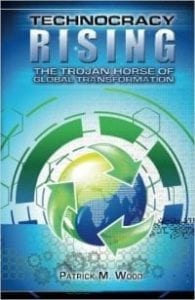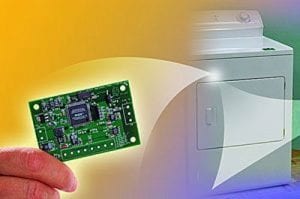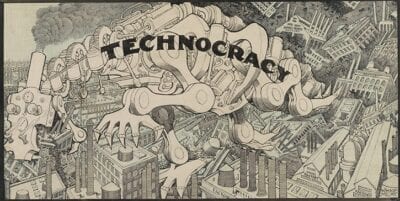The dark plan for a resource-based economy that is being pushed by the Trilateral Commission, the UN, and other globalist institutions in order to bring about a completely managed, controlled and regulated society. It is not Communism, Socialism or Fascism, even though there are similarities and overlaps. Rather, it is an economic system originally designed in the 1930s to replace Capitalism and Free Enterprise. In 1938, ‘The Technocrat’ magazine defined Technocracy as follows: “Technocracy is the science of social engineering, the scientific operation of the entire social mechanism to produce and distribute goods and services to the entire population… “ This is exactly what is happening today: social engineers working with global corporations to take over the entire economic and social landscape. Thus, society is being ‘scientifically’ reengineered to serve the corporate lords.
 The old-fashioned terms of ‘supply’ and ‘demand’ don’t apply any more. Consumer demand is artificially manipulated to soak up whatever global corporations decide they want to manufacture. In other words, Technocracy is a complete takeover of both the means of production and consumption, a feat never before attempted nor achieved in the history of the world.
The old-fashioned terms of ‘supply’ and ‘demand’ don’t apply any more. Consumer demand is artificially manipulated to soak up whatever global corporations decide they want to manufacture. In other words, Technocracy is a complete takeover of both the means of production and consumption, a feat never before attempted nor achieved in the history of the world.
It is a resource-based economic system that uses energy as its accounting system, whereas our current system relies on supply and demand and uses currency as its accounting system. Modern Technocracy was reinvigorated by members of the Commission, co-founded in 1973 by David Rockefeller and Zbigniew Brzezinski. In 1987, the Commission strategically passed it off to the United Nations under the aegis of Sustainable Development. The UN has since spread the doctrine all over planet earth in the form of treaties, agreements, initiatives and partnerships. To the corporate world, it has been sold as the “Green Economy” and “Natural Capitalism”. It was sold to civil society as “Smart Growth” and Agenda 21. In reality, it is a scientific dictatorship of scientists, engineers, and technology ‘experts’ that plan to micromanage every aspect of our lives.Patrick Wood, a 40 year expert on technocracy, says, “Technocracy will destroy America as a nation and as a culture. It will trample freedom and liberty with the jackboot of Scientific Dictatorship.” It was adopted by the world elite as a main ideology that can be packaged and sold to the world to advance a new world order under the guise of technological advancement, convenience, and the ‘greater good of society’.
“This is the first time in the history of mankind that we are setting ourselves the task of intentionally, within a defined period of time to change the economic development model that has been reigning for at least 150 years, since the industrial revolution…This is probably the most difficult task we have ever given ourselves, which is to intentionally transform the economic development model, for the first time in human history.” [Christiana Figueres, Executive Secretary of the UN Framework Convention on Climate Change, 2015]
Background
Founded by Howard Scott and M. King Hubbert in 1932 during the Great Depression, Technocracy proposed a radical new solution for the world’s economic ills. In 1932, Harry A. Porter wrote in Roosevelt and Technocracy,
“Just as the Reformation established Religious Freedom, just as the Declaration of Independence brought about our Political Freedom, Technocracy promises Economic Freedom.” [Foreward, iii]
Porter’s plan included abandoning the gold standard, suspending the stock exchanges and nationalizing railroads and public utilities. Freedom notwithstanding, Porter then called for President-elect Franklin D. Roosevelt to be sworn in as Dictator rather than President so that he could overturn the existing economic system in favor of Technocracy:
“Drastic as these changes from the present order of things may be, they will serve their purpose if only to pave the way for the Economic Revolution – and Technocracy.” (p. 63)
Technocrat Elon Musk’s Canadian grandfather, Joshua Haldeman, was an avid supporter of Technocracy, served as Research Director and ultimately became the the head of the Technocracy, Inc. party in Canada until it was banned and he was later arrested.
A Financial Times article reported that:
“North of the border, the technocracy movement was taken so seriously that it was banned by the Canadian authorities, fearing it planned to overthrow the government. The party’s disillusioned leader, the adventurer Joshua Haldeman, later abandoned Canada and moved to South Africa. One small, but intriguing, footnote in the history of the technocracy movement, though, may have particular resonance today. One of Haldeman’s grandsons is Elon Musk, the space entrepreneur who aims to turn…”
In their Introduction to Technocracy, published in 1933, the movement’s leaders declared that the “riff-raff” of outdated social institutions was blocking progress and politicians should be swept aside, just as alchemists and astrologers had previously given way to science. Traditional economics, obsessed with arbitrary pricing mechanisms rather than rational production, was nothing more than the “pathology of debt”.
“In contrast to the devious ways of politics, the fumbling methods of finance and business . . . we have the methods of science and technology,” the movement’s manifesto declared. “Modern common sense is now calling upon physical science and technology to extend the frontiers of their domain.”
The historian William E Akin identified three wellsprings for budding technocrats: a growing fashion for centralised planning among progressive reformers; the popular mythology of the engineer as the saviour of American society; and the scientific management theories of Frederick W Taylor.
If Technocracy had truly been extinguished before the onset of WWII, we would not be concerned about it today. However, when Zbigniew Brzezinski wrote Between Two Ages: America’s Role in the Technetronic Era in 1968, it was essentially a Neo-Technocratic treatise calling for a fourth and final stage of world history, or the Technetronic Era.
When David Rockefeller picked Brzezinski to co-found the Trilateral Commission in 1973, it was with the specific goal to create a “New International Economic Order.” Without some knowledge of historic Technocracy, exactly what the Trilateral Commission ultimately had in mind with such a goal could not possibly have been understood.
Today, it is necessary to rethink these issues in order to determine a) if this radical movement is still operating, b) what are their goals and c) how do they plan to achieve their goals.
In Carbon Currency: A New Beginning for Technocracy?, the subject of historic Technocracy was introduced in the context of creating a new economic system based on energy accounting rather than price accounting. An energy-based accounting system uses “energy certificates,” or Carbon Currency, instead of dollars or other fiat currencies. Periodic and equal allocations of available energy are made to citizens, but they must be used within the defined time period before they reach an expiration date. Furthermore, the ability to own private property and accumulate wealth would be deemed unnecessary.
The pressing and unanswered question is how would such a Technocratic system actually be implemented?
This paper will now address the strategy, tactical requirements and progress of establishing an energy-based Technate in North America. [“Technate” is the term used to describe the geographic region operated according to Technocracy. Thus, a North American Technate would include Canada, Mexico and the U.S. and they would all be under common control. ]
Requirements
The Technocracy Study Course, written by Howard Scott and M. King Hubbert in 1932, established a detailed framework for Technocracy in terms of energy production, distribution and usage.
According to Scott and Hubbert, the distribution of energy resources must be monitored and measured in order for the system to work — and this is the key: monitoring and measuring.
They wrote that the system must do the following things:
- “Register on a continuous 24 hour-per-day basis the total net conversion of energy.”
- “By means of the registration of energy converted and consumed, make possible a balanced load.”
- “Provide a continuous inventory of all production and consumption.”
- “Provide a specific registration of the type, kind, etc., of all goods and services, where produced and where used.”
- “Provide specific registration of the consumption of each individual, plus a record and description of the individual.” [Scott, Howard et al, Technocracy Study Source, p. 232]
In 1932, such technology did not exist. Time was on the Technocrat’s side, however, because this technology does exist today, and it is being rapidly implemented to do exactly what Scott and Hubbert specified: Namely, to exhaustively monitor, measure and control every ampere of energy delivered to consumers and businesses on a system-wide basis.
It’s called: Smart Grid.
What is Smart Grid?
Smart Grid is a broad technical term that encompasses the generation, distribution and consumption of electrical power, with an inclusion for gas and water as well. America’s aging power grid is increasingly fragile and inefficient. Smart Grid is an initiative that seeks to completely redesign the power grid using advanced digital technology, including the installation of new, digital meters on every home and business in the U.S.
These digital meters provide around-the-clock monitoring of a consumer’s energy consumption using continuous 2-way communication between the utility and the consumer’s property. Furthermore, meters will be able to communicate with electrical devices within the residence to gather consumption data and to control certain devices directly without consumer intervention.
According to a U.S. Department of Energy publication,
“The Department of Energy has been charged with orchestrating the wholesale modernization of our nation’s electrical grid… Heading this effort is the Office of Electricity Delivery and Energy Reliability. In concert with its cutting edge research and energy policy programs, the office’s newly formed, multi-agency Smart Grid Task Force is responsible for coordinating standards development, guiding research and development projects, and reconciling the agendas of a wide range of stakeholders.” (See The Smart Grid: An Introduction)
This is a relatively new initiative, but it is racing forward at breakneck speed. The Office of Electricity Delivery was created in 2003 under President George W. Bush, and elevated in stature in 2007 by creating the position of Assistant Secretary of Electricity Delivery and Energy Reliability to head it.
It is not clearly stated who “charged” the Department of Energy to this task, but since the Secretary of Energy answers directly to the President, it is assumed that it was a directive from the President. There certainly was no Congressional directive or mandate.
Implementation
On October 27, 2009, the Obama administration unveiled its Smart Grid plan by awarding $3.4 billion awarded to 100 Smart Grid projects. According to the Department of Energy’s press release, these awards will result in the installation of:
- more than 850 sensors called “Phasor Measurement Units” to monitor the overall power grid nationwide
- 200,000 smart transformers
- 700 automated substations (about 5 percent of the nation’s total)
- 1,000,000 in-home displays
- 345,000 load control devices in homes
This is the “kick-start” of Smart Grid in the U.S. On January 8, 2010, President Obama unveiled an additional $2.3 billion Federal funding program for the “energy manufacturing sector” as part of the $787 billion American Reinvestment and Recovery Act. Funding had already been awarded to 183 projects in 43 states, pending Obama’s announcement.
One such project in the northwest is headed by Battelle Memorial Institute, covering five states and targeting 60,000 customers. The project was actually developed by the Bonneville Power Administration (BPA), a federal agency underneath the Department of Energy. Since it is pointedly illegal for a federal agency to apply for federal funds, BPA passed the project off to Battelle, a non-profit and non-governmental organization (NGO), which was promptly awarded $178 million.
It is interesting to note that BPA takes credit for originating the Smart Grid concept in the early 1990’s, which it termed “Energy Web.” You can see from BPA’s graphic depiction that it is comprehensive in scope from production to consumption.
According to Battelle’s August 27, 2009 press release,
“The project will involve more than 60,000 metered customers in Idaho, Montana, Oregon, Washington and Wyoming. Using smart grid technologies, the project will engage system assets exceeding 112 megawatts, the equivalent of power to serve 86,000 households.
‘The proposed demonstration will study smart grid benefits at unprecedented geographic breadth across five states, spanning the electrical system from generation to end-use, and containing many key functions of the future smart grid,’ said Mike Davis, a Battelle vice president. ‘The intended impact of this project will span well beyond traditional utility service territory boundaries, helping to enable a future grid that meets pressing local, regional and national needs’.”
Battelle and BPA intend to work closely together and there is an obvious blurring as to who is really in control of the project’s management during the test period.
In a “For Internal Use Only” document written in August 2009, BPA offers talking points to its partners. It states that “Smart Grid technology includes everything from interactive appliances in homes to smart meters, substation automation and sensors on transmission lines.” [Emphasis added]
A Network of Things
As the World Wide Web (WWW) is to people, the Network of Things (NOT) is to appliances. This brand new technology creates a wireless network between a broad range of inanimate objects from shoes to refrigerators. This concept is “shovel ready” for Smart Grid implementation because appliances, meters and substations are all inanimate items that technocrats would have communicating with each other.

For instance, In 2008 the Pacific Northwest National Laboratory (PNNL) developed this small circuit board called a “Grid Friendly Appliance Controller.” According to a Department of Energy brochure,
“The GFA Controller developed by Pacific Northwest National Laboratory is a small circuit board built into household appliances that reduces stress on the power grid by continually monitoring fluctuations in available power. During times of high demand, appliances equipped with the controller automatically shut down for a short period of time, resulting in a cumulative reduction that can maintain stability on the grid.”
According to PNNL’s website,
“The controller is essentially a simple computer chip that can be installed in regular household appliances like dishwashers, clothes washers, dryers, refrigerators, air conditioners, and water heaters. The chip senses when there is a disruption in the grid and turns the appliances off for a few seconds or minutes to allow the grid to stabilize. The controllers also can be programmed to delay the restart of the appliances. The delay allows the appliances to be turned on one at a time rather than all at once to ease power restoration following an outage.”
You can see how automatic actions are intended to be triggered by direct interaction between objects, without human intervention. The rules will be written by programmers under the direction of technocrats who understand the system, and then downloaded to the controllers as necessary. Thus, changes to the rules can be made on the fly, at any time and without the homeowner’s knowledge.
PNNL is not a private enterprise, however. It is “owned” by the U.S. Department of Energy and operated by Battelle Memorial Institute!
All of this technology will be enabled with Wi-Fi circuitry that is identical to the Wi-Fi-enabled network modems and routers commonly used in homes and businesses throughout the world. Wi-Fi is a trademark of the Wi-Fi Alliance that refers to wireless network systems used in devices from personal computers to mobile phones, connecting them together and/or to the Internet.
According to the Wi-Fi Alliance, “the need for Smart Grid solutions is being driven by the emergence of distributed power generation and management/monitoring of consumption.” In their white paper, Wi-Fi for the Smart Grid, they list the specific requirements for interoperability posted by the Department of Energy:
- “Provide two-way communication among grid users, e.g. regional market operators, utilities, service providers and consumers”
- “Allow power system operators to monitor their own systems as well as neighboring systems that affect them so as to facilitate more reliable energy distribution and delivery”
- “Coordinate the integration into the power system of emerging technologies such as renewable resources, demand response resources, electricity storage facilities and electric transportation systems”
- “Ensure the cyber security of the grid”
Thus, the bi-directional and real time Smart Grid communications network will depend on Wi-Fi from end to end. This is easily understood from the two figures included in the Wi-Fi Alliance white paper:
While the consumer is pacified with the promise of lower utility costs, it is the utility company who will enforce the policies set at the regional, national and global regulators. Thus, if a neighboring system has a shortage of electricity, your thermostat might automatically be turned down to compensate; if you have exceeded your monthly daytime quota of electricity, energy-consuming tasks like washing and drying clothes, could be limited to overnight hours.
Smart Grid and the utility’s control extends beyond electricity. Notice in Figure 1 above that there is a Wi-Fi linkage to gas and water meters as well!
Consumer Blowback?
Wall Street Journal reported “What Utilities Have Learned From Smart-Meter Tests…” on February 22, 2010, and revealed several important early aspects of smart grid implementation.
- A principal goal is to enable utilities to restructure rate plans
- A principal goal is to force consumer behavior to change
- Some utility executives anticipate and fear a consumer rebellion
Nevertheless, the big carrot for utility companies to go along with the government’s Smart Grid is to balance electrical demand, cut back on new power generation facilities and enhance their profit picture.
Before the dust settles on Smart Grid, both consumers and utilities may learn some sharp lessons about government intervention: When the government shows up on your doorstep and offers to help you save money, everyone knows that is an oxymoron. Government does not function to help people or companies to save money or to be more efficient; rather, it functions to maintain and increase its own power and control over its citizens.
Continued on next page…





